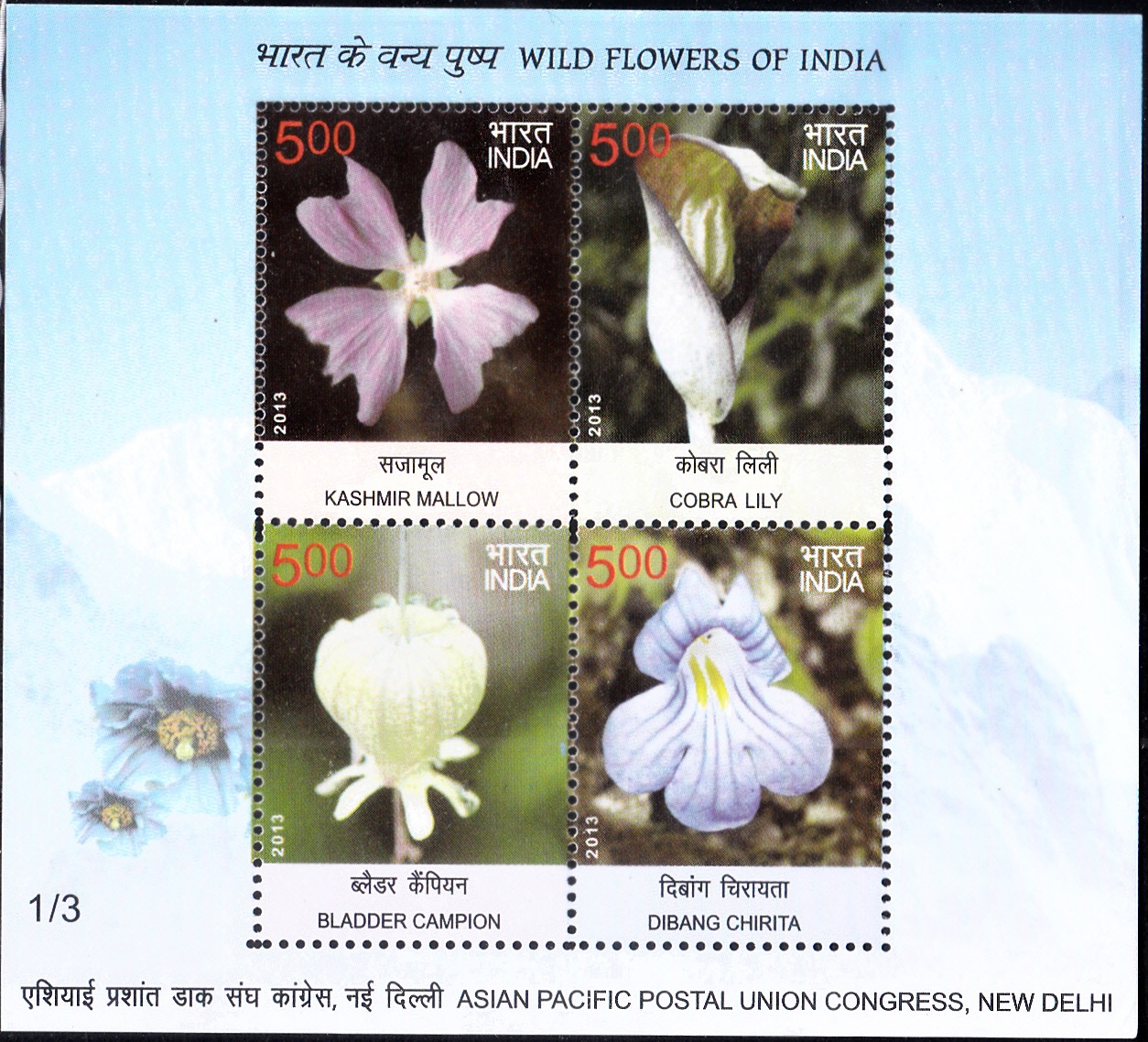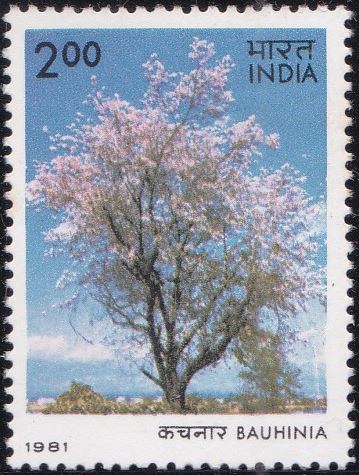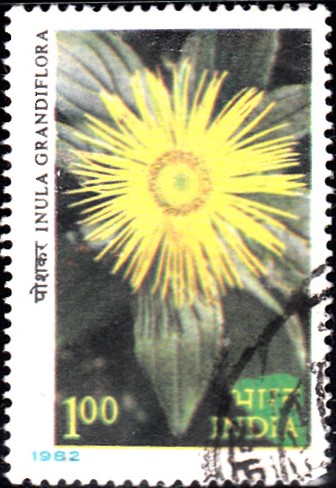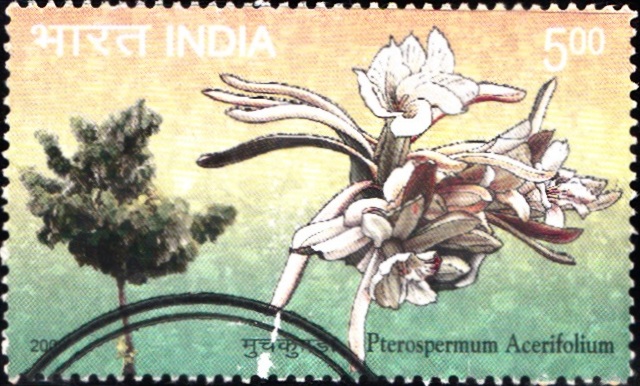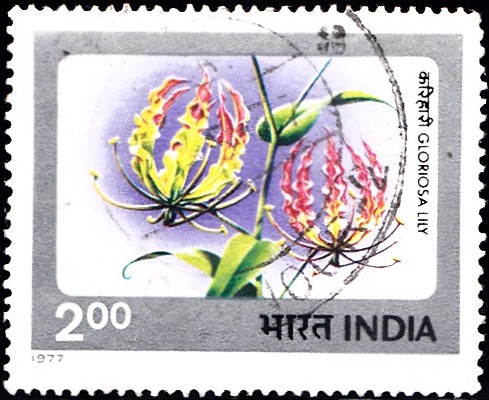
Indian Flowers 1977
Complete Set of 4 nos of special postage stamps on the Flowers of India : Lotus, Tree–Rhododendron, Kadamba and Gloriosa Lily :

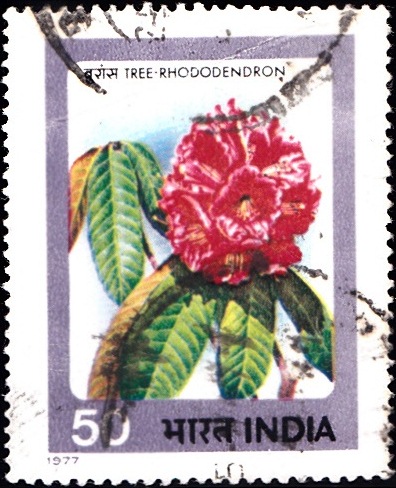
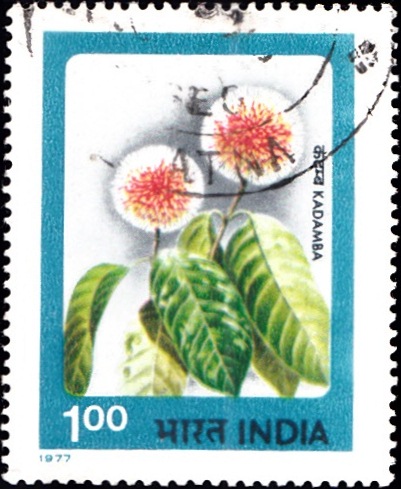
 Issued by India
Issued by India
Issued on Jul 1, 1977
Designs : The designs of the four stamps are based on paintings done by Shri J. P. Irani of Bombay. The paintings are based on colour transparencies provided by Shri K. M. Vaid of Dehra Dun in the case of Tree-Rhododendron, Kadamba and Gloriosa Lily and by Shri Rajesh Bedi of New Delhi in the case of Lotus.
Type : Stamps, Postal Used
Colour : Multicolour
Denomination : 25, 50, 100 & 200 Paise
Overall size : 4.06 x 3.29 cms.
Printing size : 3.66 x 2.88 cms.
Perforation : 14 x 14½ (25 & 200 P.) and 14½ x 14 (50 & 100 P.)
Paper : Unwatermarked paper
Number per Issue Sheet : 35
Number Printed : 25 P. – 50,00,000, 50 P. – 30,00,000, 100 P. – 20,00,000 and 200 P. – 20,00,000
Printing Process : Photogravure
Printed at : India Security Press
About :
- Flowers were there long before man came into existence. They filled him with awe and wonder, inspired him into composing song and verse, and, when they withered and fell, made him pause and reflect on life.
- India is the home of a large number of flowering plants, and many exotics seem to thrive as well in our country as in their own lands. This is not surprising, for almost any type of flowering plant would find a hospitable ontological haven from the snow-clad Himalayas to the surf-washed Kanyakumari, from the sun-scorched plains of Rajasthan to the rain-drenched hills of Assam. No wonder, therefore, that flowering plants have marched across our plains, ascended hills, dropped over high banks, overhung trellises, clung to walls, clasped hedges, festooned fences, clambered up all trees, and soared to the Himalayan heights.
- Lotus (Nelumbo nucifera) :
- When we think of Indian Flowers, we think first of the Lotus, our National Flower.
- Legend says that the Sacred Lotus emerged from the navel of Vishnu, enveloping Brahma, the Creator, in its satin-smooth petals. In the myths, legends, poetry and music of our ancient people, the Lotus has always figured as a symbol of beauty, perfection and sanctity. The flower has been widely used in rituals, as motifs in architectural decoration, in beautiful designs in jewellery, in pottery, embroidery, painting and sculpture.
- A full-blown lotus flower measures 30 centimetres across. The many fragrant petals are usually in lovely shades of pastel-pink, although red and white forms of lotus are not uncommon. The so-called ‘Blue Lotus of India‘, however, is not a lotus but a water-lily. At the centre of the flower are numerous golden stamens surrounding a top shaped yellow torus, in which are embedded 10-30 seeds. The saucer-shaped gracious leaves measures 60-90 centimetres across and are borne, like the flowers, well above water on prickly stalks. The seeds and the underground white or buff-orange rhizomes are edible.
- Tree-Rhododendron (Rhododendron arboreum Smith) :
- No account of flowers is ever said to be complete without a mention of the Rhododendrons, which include most of the Azaleas of the floriculturists.
- About 110 species of Rhododendron are found wild in India – and some consider their number to be more, particularly in the Himalayan region. The best known of these is the Himalayan Tree-Rhododendron, introduced into England before 1815. Some of the world’s most gorgeous cultivated Rhododendrons trace their origin to it.
- An evergreen tree, Rhododendron arboretum attains a height of 14 metres in the Himalayan belt at altitudes of 1,200-4,000 metres. The leaves are robust, lanceolate, 10-20 centimetres long, shiny above and silvery beneath. The flowering season is from January to April. The bell-shaped flowers, up to 20 in dense, showy trusses, are normally deep-red, with black flecks. Many other tints, including pink and white, sometimes spotted, are also known.
- Kadamba (Anthocephalus chinensis (Lamarck) Richard ex Walpers) :
- The Kadamba, a tree associated with the childhood of Lord Krishna, is one of our most ancient shade-giving ornamentals.
- An occasional specimen of this magnificent tree scattered between Mathura and Bharatpur is all that is left of the vast Kadamba forests that once thrived in the Brindavan region.
- A tall, deciduous tree, the Kadamba has a clean cylindrical stem, horizontal branches and glossy ovate-oblong leaves, often 30 centimetres long and 15 centimetres wide.
- The many small, scented, cream-and-orange flowers are combined in compact spherical heads of the size of golf-balls. They come in great profusion in August.
- Gloriosa Lily (Gloriosa superba Linnaeus) :
- The curiously shaped flower of Gloriosa Lily has six stamens, arched gracefully upward, above which are placed six long, breathtakingly beautiful perianth segments, which are much crisped, with attractive curves and smoothly flowing edges. The varicoloured blooms are first green, then change to bright-yellow, flame-orange, scarlet and brick-red, in often luminous and always pleasing colours. The long-lanceolate, pale-green, soft, smooth leaves end up in spirally twisted tips that clasp any object that comes in their way, enabling the planet to clamber up to a height of 3 metres.
- When in bloom in late summer and the rainy season, the Gloriosa Lily is undoubtedly one of the most startlingly beautiful tropical vines.


